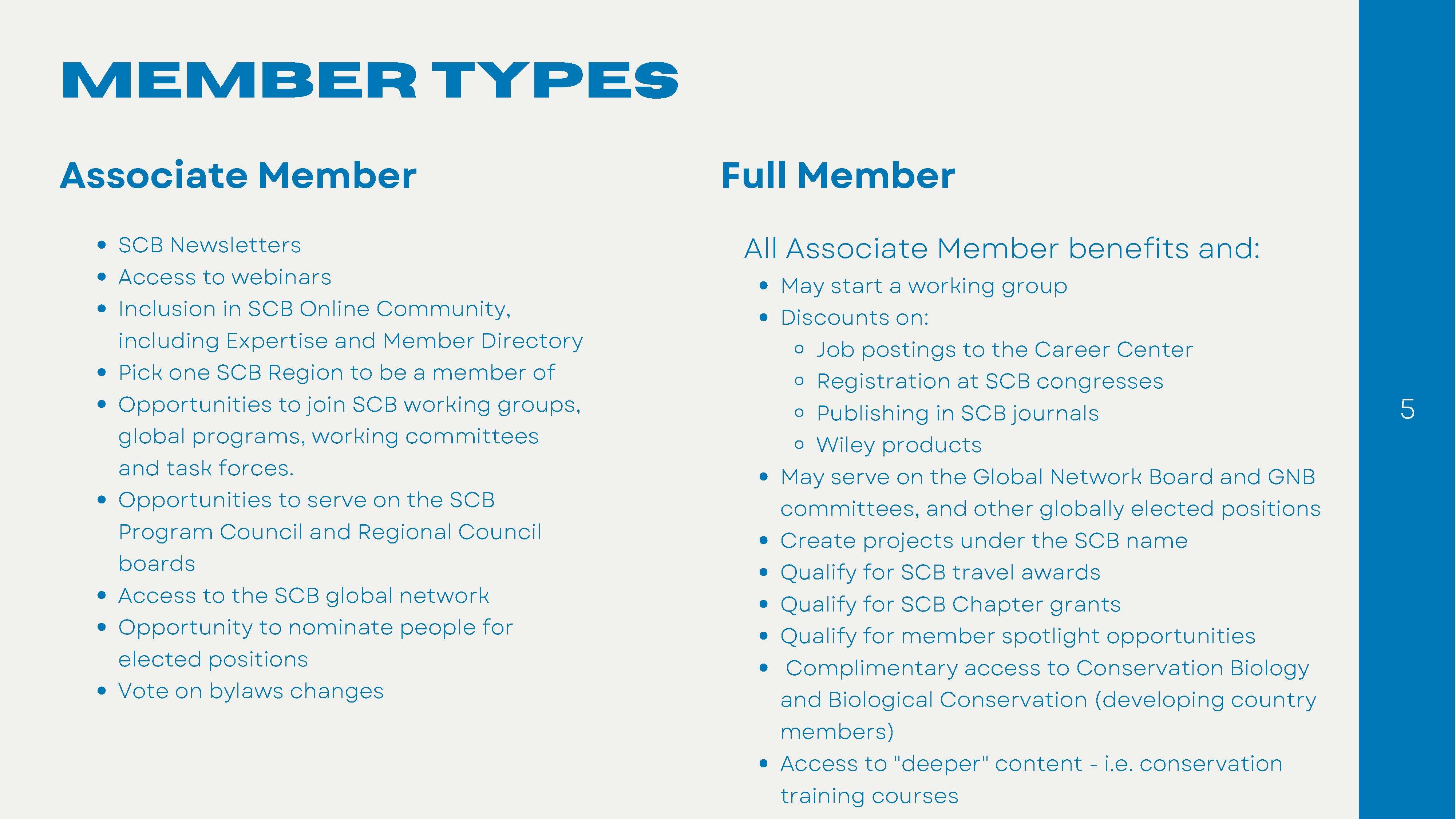FAQ on Proposed Changes to SCB’s Bylaws
Transition Home Restructure Overview Get Involved
Following is a summary of the bylaw changes that directly affect members and have been recommended and approved by the Society for Conservation Biology’s Governance Committee, Transition Implementation Group, and Board of Governors (link to the proposed changes).
Is my membership changing?
Yes, Article V of the bylaws has been amended to create two types of members. Full Members and Associate Members. All current members will become Full Members. Full Members pay dues, have greater access to resources through the Society, and may serve on the Global Network Board. Associate Members do not pay dues and have more limited access to Society resources and are not permitted to serve on the Global Network Board.
The purpose of expanding membership with an Associate Member category is to increase the reach of SCB so we are a more inclusive, equitable Society by providing value to the conservation community through a new way to participate in SCB (in addition to the paid membership). The creation of the Associate Member enables access to SCB for people with less financial means, which will lead to a more geographic and disciplinary diversity and participation in the Society from individuals working across the conservation and social science sectors.
Please review Article V of the bylaws for more information.
What are the benefits of being a Full Member vs. an Associate Member?

How are Sections changing?
Under the previous model, SCB’s regional groups were called Sections. Sections are now called Regions in the new model.
In order to create more community and identity, we ask members to join a single region instead of two. Current members will be asked to select their preferred region. This change also enables the Society’s shift to representative democracy, which is discussed later in this FAQ.
How are director elections changing?
Members will no longer directly elect directors. Instead, members will put forth nominations for open director positions, then the governance council will vet nominations and send them to the sitting board for election.
The Society has chosen to use representative democracy instead of direct democracy because historically there has been low engagement in director elections, which has concentrated power. The purpose of changing the election process is to create a larger pool of director candidates to be vetted and voted on and to involve more people in the process.
Please review Section 6.03 of the bylaws for a more detailed explanation of the process.
Will there be more opportunities for leadership in SCB?
Yes, under the new structure power is being decentralized and distributed to the Sections, the Programs Council, and the Regional Council in addition to the Global Network Board. There will be meaningful leadership opportunities in each of these places and financial resources to support the work.
How does the new structure create conditions for SCB to achieve its DEI goals in Vision 2026?
We believe that the new structure creates the conditions for SCB to become a more equitable Society and will help SCB live in to its EID goals for the transition: To advance equitable access and participation in SCB’s services, leadership and governance in a way that lifts LGBTQ, BIPOC voices, perspectives and wisdom and addresses historic power inequities so that SCB increases problem solving capacity, grows membership, increases global representation, and builds capacity in geographies with the highest biodiversity.
The conditions being set for a more equitable, decentralized and distributed leadership structure and representative democracy are goals of the transition, but it's up to the members to bring these goals to life.